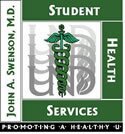|
Smoking
Nicotine, one of the key ingredients in tobacco, stimulates brain chemicals that can lead to addiction. It increases the amount of a brain chemical called dopamine, which makes you feel good. This is a part of the addiction process. The carbon monoxide you inhale from tobacco smoke replaces oxygen in your blood cells, robbing your heart, brain, and the rest of your body. Smoking also deadens your senses of taste and smell so food isn't as appetizing as it once was.
According to the American Lung Association Smoking Fact Sheet, cigarettes contain at least 63 distinct cancer-causing chemicals, such as arsenic and cyanide. Smoking is directly responsible for 87 percent of lung cancer cases and causes most cases of emphysema and chronic bronchitis. Smoking is also a major factor in coronary heart disease and stroke; may be causally related to malignancies in other parts of the body; and has been linked to a variety of other conditions and disorders, including slowed healing of wounds, infertility, and peptic ulcer disease. Nicotine is an addictive drug, which when inhaled in cigarette smoke reaches the brain faster than drugs that enter the body intravenously. Smokers become not only physically addicted to nicotine, they also link smoking with many social activities, making smoking a difficult habit to break.
Guidelines and tips for smokers who are quitting:
- Be committed. Realize that quitting smoking is a difficult undertaking and takes a lot of effort, but remember that half the people who have ever smoked have quit.
- Talk with your doctors and discuss nicotine replacement therapy and smoking cessation programs.
- Do everything possible to maximize success.
- Set a quit date and don't try to just cut back.
- Try to figure out why past attempts did not work.
- Get family, friends, and co-workers to support you in your efforts.
- Learn to cope in difficult environments (environments that spark the urge to smoke).
- Don't focus on weight gain. Most people only gain ten pounds or less which is much less of a health risk than smoking.
- Don't try to diet at the same time, it will hinder your success.
How to stop smoking:
- Do your homework
- Make small changes
- Pay attention to your smoking
- Seek help
- Be motivated
- Set a stop date
Possible types of cessation services:
- Group counseling
- Individual counseling
- Medication prescriptions (such as Zyban or nicotine replacement therapy)
- Self-help materials (books, videotapes, internet resources)
Locations for cessation services:
- UND Counseling Center
- UND Student Health Services
- Referral off-campus to groups such as American Lung Society or American Cancer Society
- Altru Smoking Cessation Class
Resource Links:
v WhyQuit.com. (www.whyquit.com)
v National Cancer Institute. (www.nci.nih.gov)
v Food and Drug Administration. (www.fda.gov/opacom/campaigns/tobacco.html)
v Centers for Disease Control and Prevention, National Center for Chronic Disease Prevention and Health Promotion. Tobacco information page. (www.cdc.gov/nccdphp/osh/tobacco.htm)
v American Cancer Society. (www.cancer.org), 1-800-227-2345
v American Lung Association. (www.lungusa.org/tobacco), 1-800-586-4872
v American Medical Association. (www.ama-assn.org)
v Harvard School of Public Health. (www.hsph.harvard.edu/cas)
v Quitnet Quit All Together. (www.quitnet.com/qn_main.jtml)
 Back to Top 20 Health Issues Back to Top 20 Health Issues
|
|


